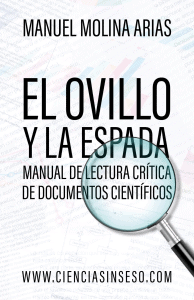Handbook of critical appraisal.

Not yet three months ago, 27 years have passed since one of the most anthological moments in the entire history of television in our country. At the end of March 1993, the writer Francisco Umbral was invited to participate in a television program presented and hosted by Mercedes Milá who, apparently, had convinced him to attend with the bait to talk about the last book he had just published.
The problem is that poor Umbral found himself at a table with two other people who, following the thread of the program, were talking about everything except his book, with the apparent complicity of the presenter and the enthusiastic cooperation of the audience on the set.
And what had to happen happened. Time was running, the program was going to end and there was no talk about the book, so Umbral, demonstrating other lesser-known qualities than his genius as a novelist and journalist, exploded demanding that his book be talked about, that it was the reason why he had come to TV, repeatedly saying the phrase that has remained forever in the Spanish cultural heritage: “I have come here to talk about my book.”
The regular readers of the blog are accustomed to seeing that the posts usually begin with some delusion of my imagination that ends up giving way to the real topic of the day, which has nothing to do with what was spoken at the beginning of the post, so you will already be wondering what today’s post will be about.
But today you are going to get a surprise. There is no topic on evidence-based medicine. Because today, I have come here to talk about my book.
Handbook of critical appraisal
The blog “Ciencia sin seso… locura doble” was born on July 26, 2012, with the ambitious purpose of teaching topics of research methodology and evidence-based medicine in ways that seem easy and even fun. Since then, about 160 posts have been published in two languages (in Spanish and in something that wants to resemble the language of the Bard from Avon) and it has grown in audience and diversity of topics, although the most important milestone from the point of view of its dissemination and prestige was its inclusion in AnestesiaR web in May 2014.
It was time, then, to bring into being to at least part of the contents so that they formed a coherent and homogeneous set. And this is how “El ovillo y la espada” (“The ball and the sword”) is born, the book I have come to talk about here today.
You can see that I continue with my hobby of giving it a title that has nothing to do with the content of the work. In reality, “Tienda on-line AnestesiaR” is a “Manual for critical appraisal of scientific documents”, made up of a selection of blog’s posts that, grouped together, are intended to provide the reader with the necessary knowledge to face the critical appraisal of the articles that we have to resort to daily in our professional practice.
The manual is made up of a series of blocks that deal with the usual steps that make up evidence-based medicine systematics: the generation of the structured clinical question in the face of a knowledge gap, the bibliographic search, the characteristics of the most common epidemiological designs and the guidelines for critical appraising the papers based on these designs.
To finish, I wish only thank my colleagues and friends from the Evidence-Based Pediatrics Committee of the AEP-AEPap and from AnestesiaR. With the first ones I have learned everything I know about these topics (do not think it is much just because I write a book) and thanks to the second ones the blog has reached a diffusion that was beyond my possibilities, in addition to making the project that I am presenting you today. Tienda on-line AnestesiaR, in case someone hasn’t found out yet.
We`re leaving…
And with this we are leaving. I hope you are encouraged to read my creature and that it be useful to you. We get to the end of this post without explaining what the balls and swords are in the title of the manual. I will tell you that it has something to do with a certain Theseus. But that’s another story…
